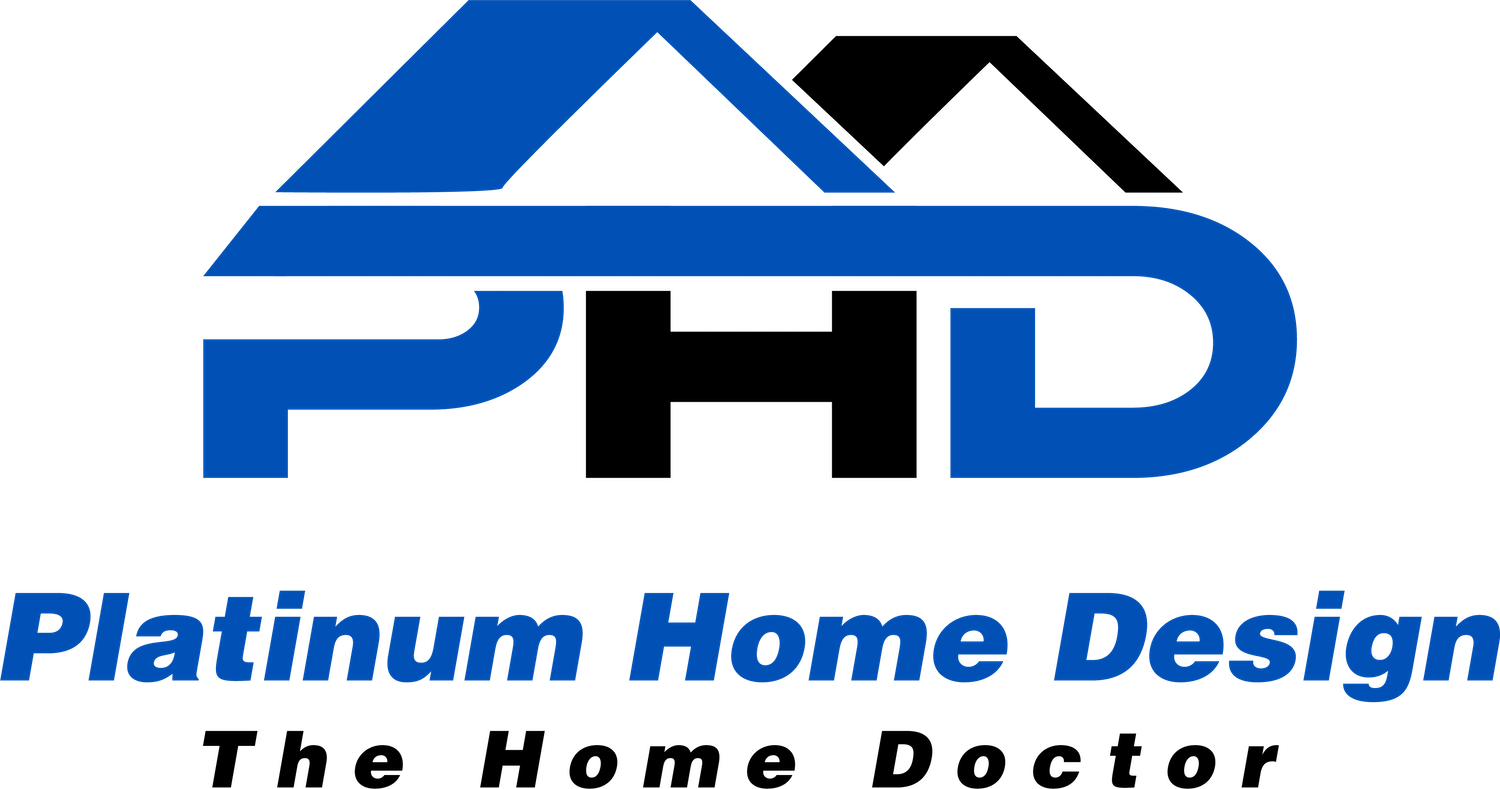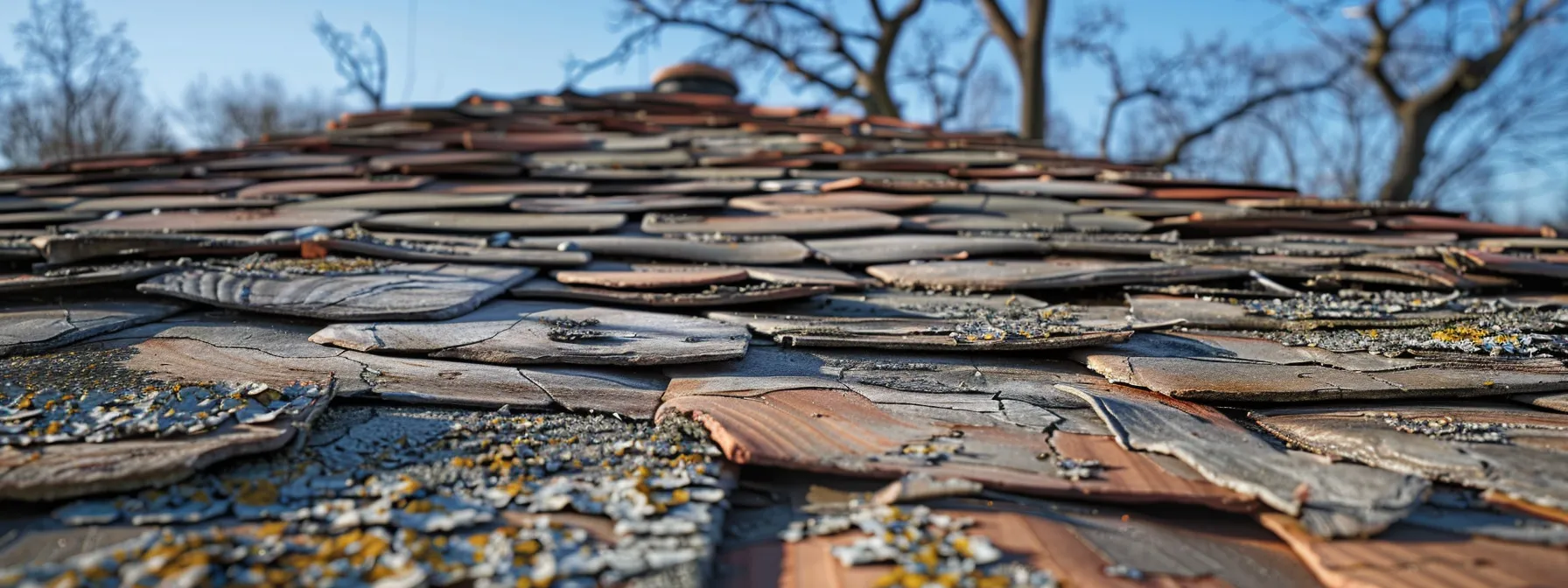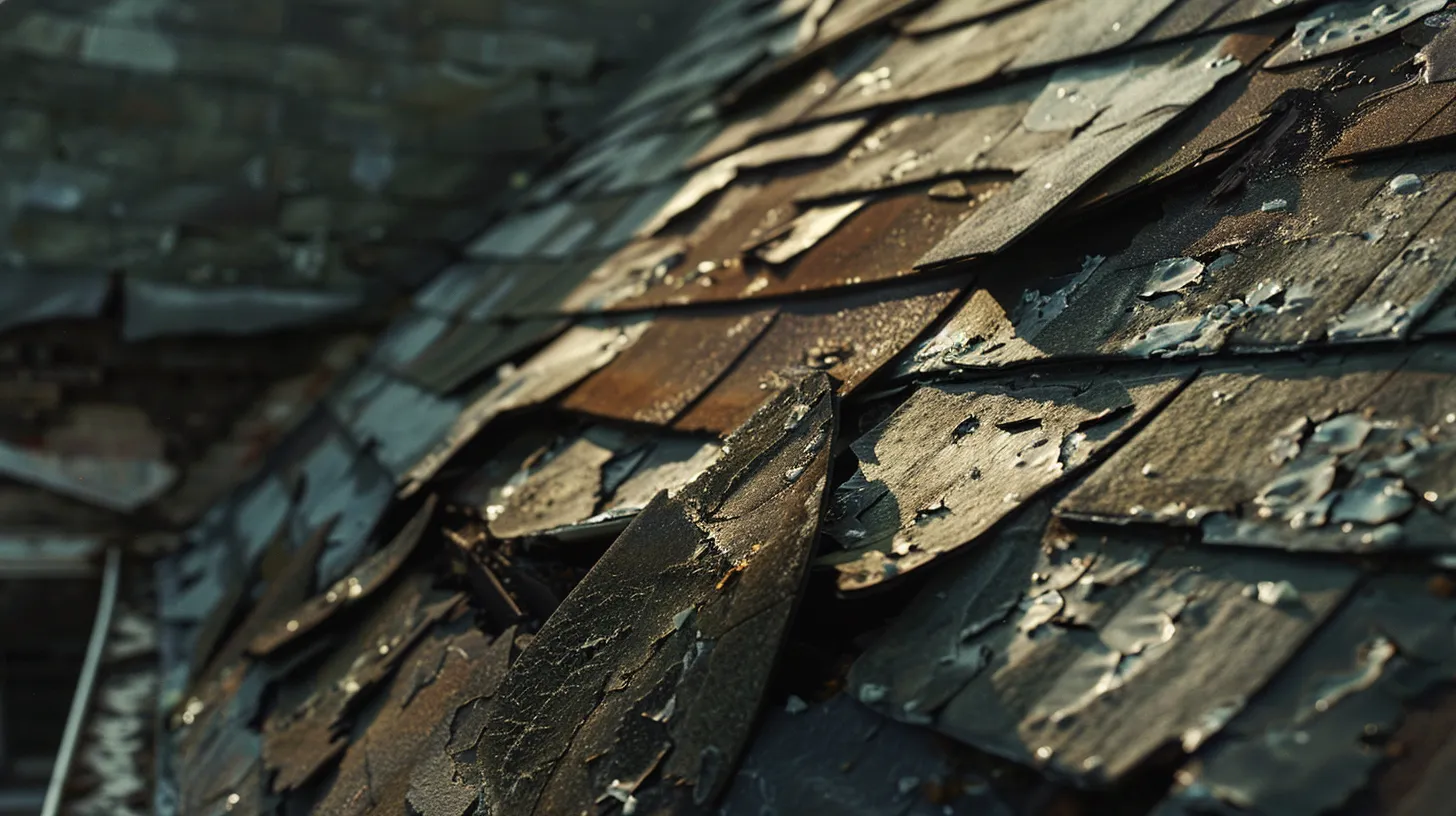
Maximize Home Value by Keeping Up With Roof Inspections
Maximizing Your Home’s Value With Regular Roof Checks
Are your regular roof checks really keeping your home safe and adding value? This post covers the essentials of understanding how roof condition affects property worth and guides you through a DIY roof inspection. You will learn how to spot common problems early and decide when it’s time to contact experts. Enjoy clear steps that aim to save you money and boost your home’s curb appeal while addressing real concerns about home maintenance.
Key Takeaways
- regular roof inspections catch small issues before they become costly repairs
- clearing debris keeps the roof structure safe and prevents water damage
- documenting roof condition supports professional evaluations and informed decisions
- using proper tools and safety gear is essential during roof inspections
- professional repairs help maintain long-term home value and structural integrity
You improve your home’s longevity by opting for professional roof inspections that detect and address issues before they escalate. Regular checks help you spot damage in fascia areas and ensure your gear is ready for maintenance.
You extend your roof’s life by promptly clearing debris that can cause wear and tear. Removing such materials protects your downspout and overall roof structure.
You save money by addressing minor repairs early. Maintaining clean fascia and unclogged downspouts minimizes major repair costs over time.
You benefit from efficient upkeep with the right gear and skilled inspections. Regular professional roof inspections ensure that every part, including fascia and downspouts, remains in top condition.
Your key points have set the stage. Now, you learn how your roof’s state speaks to your home’s true value.
Understand How Roof Condition Affects Property Worth
Your roof’s health directly influences your home’s market value. You learn its impact on property appraisal and buyer impressions, while assessing the return on investment for regular upkeep. Whether you work with wood or tile, addressing corrosion in your attic and elsewhere reduces risks. Get a free estimate to know where to focus your maintenance efforts.
Direct Link Between Roof Health and Market Value
Your roof’s condition plays a key role in determining your home’s overall market appeal, and you recognize that even small issues like curling shingles or minor water damage signal that increased attention is needed. As a homeowner working with reputable services such as a trusted llc, you learn that regular inspections help detect early signs of wear, including problems with your soffit, ensuring that any necessary repairs are addressed before they diminish your property’s value.
When you invest in regular roof checks, you set a precedent for maintaining a strong market value, where every detail counts. You understand that addressing signs of water damage and preventing further curling in your roofing materials build a robust case for your home’s upkeep, which in turn reassures buyers and appraisers, reinforcing the importance of precision and attention from professionals in the field.
Avoiding Appraisal Issues Caused by Roof Neglect
You recognize that roof neglect raises serious risk factors that may impact your home’s appraisal. By choosing professional roofing services, you ensure proper maintenance, including inspecting flashing and sealing any gaps to improve safety and overall valuation:
You take charge by following a regular checkup schedule to minimize potential issues that may lower your property’s worth. Handmade insights from experienced roofing professionals help you pinpoint problematic spots, ensuring your roof remains safe and reliable for years to come.
Buyer Perceptions of Homes With Well-Maintained Roofs
You understand that a well-maintained roof signals a strong home, and buyers appreciate when issues such as mildew and wear are promptly managed. Regular roof checks and timely roof-repair-replacement work, including proper caulk application, build trust in the property’s upkeep, even after severe weather events.
You have the advantage of clear maintenance records that show a commitment to quality care. Buyers notice detailed efforts such as resolving wood damage and sealing gaps with quality caulk, which reassures them regarding long-term investment:
- Regular roof inspections
- Timely roof-repair-replacement work
- Proper caulk application to prevent mildew and seal gaps
- Protection against damage from severe weather
Your proactive steps in roof upkeep create a perception of a well-maintained home that is ready for the market.
Calculating the Return on Investment for Roof Upkeep
You calculate the return on investment for roof upkeep by assessing repair costs, expert recommendations, and the long-term benefits of maintaining proper drainage and asphalt shingle quality; doing so helps you protect your home against wear that may lead to costly issues:
- Routine inspections by an expert
- Timely cleaning of drainage systems
- Maintenance of asphalt shingle integrity
- Prevention of progressive wear
You focus on actionable insights by comparing repair expenses with potential savings, ensuring that every measure taken to protect your home adds value. This straightforward approach helps you make informed decisions that benefit both your current living conditions and future property worth.
You now know the roof’s impact on your home’s worth. Pick up your tools and learn to inspect it yourself.
Performing Your Own Roof Assessment a Diy Roof Inspection Guide
You start by ensuring safety firstly by using a safety harness and following proper procedures. Next, you learn which essential tools to gather for a thorough home inspection, from detecting moisture to spotting algae growth. Ground-level checks help you see issues without climbing, while inspecting shingles, flashing, and gutters up close lets you document findings for lasting longevity and future professional help.
Safety First Steps Before Starting Your Diy Roof Inspection
You begin by ensuring your safety gear is secured and ready. Check that your ladder is stable and your safety harness fits properly to prevent any emergency incidents while assessing your construction roofing area for potential issues.
You focus on identifying any signs of roof damage, such as missing shingles, and prepare to call a professional roofer if you detect any critical issues. By taking these steps, you maintain a practical approach to your DIY roof inspection and protect your home’s value.
Essential Tools for a Thorough Self-Inspection
You equip yourself with basic tools such as a ladder, flashlight, and moisture meter to conduct a thorough self-inspection. You also include a pair of binoculars to assess hard-to-see areas like your skylight for signs of wear and tear or roof problems that might otherwise be overlooked during a free roof inspection.
You ensure that your inspection kit covers tools essential for identifying pest activity and damage that compromises your roof’s integrity. You find that these practical instruments help you track early signs of deterioration, allowing you to schedule a professional evaluation before any minor issues develop into major concerns.
Ground-Level Checks What to Look for Without Climbing
You assess your roof’s condition from the ground by using the natural daylight to spot any signs of a leak near the eaves or ridge. You may notice loose or missing sealant that could allow wind to damage your structure, and these observations provide clear reference points for professional roofing services approved by the better business bureau.
You evaluate the roof’s overall state by checking visible areas for discoloration or water stains that indicate potential problems. You use the daylight to identify any shifts in the roof’s alignment that the wind might cause, ensuring you document everything to support future maintenance or repairs.
Inspecting Shingles Flashing and Gutters Up Close
You begin your close-up review of shingles, flashing, and gutters by noting any signs of wear or damage, such as cracks or stains that may result from a recent storm. Document your observations during the roof inspection for later discussion with a professional; this helps you track factors like lichen growth and altered flashing alignment:
- Check shingles for missing attachments
- Inspect flashing for looseness or rust
- Clear gutters of debris to ensure proper drainage
You apply the same careful scrutiny during your home roof inspection by examining each component up close while monitoring shifts in material integrity. This direct inspection method allows you to spot potential issues early, providing clear guidance on whether a specialist should address minor repairs, ensuring your roofing remains resilient against future storms.
Documenting Findings for Future Reference or Professional Help
You record detailed notes on your roof inspection to keep track of any issues you detect, such as peeling shingles or loose flashing. This documentation assists you in guiding future professional evaluations and ensures you have a clear history of your roof’s condition.
You capture photographs during your DIY roof assessment to serve as visual proof of areas needing repair. This approach helps you communicate effectively with roofing experts and supports a timely response to any maintenance needs.
You have seen the signs up close. The next part shows you how to catch small problems before they grow.
Identifying Common Roof Problems Early Saves Money
You learn to spot missing, damaged, or curling shingles, check for leaks and water stains, and recognize flashing issues around vents and chimneys. You assess gutter condition and drainage, while understanding effects of moss, algae, or debris accumulation. These insights help you take early action and prevent expensive repairs.
Spotting Missing Damaged or Curling Shingles
You examine your roof for visible signs of damage, focusing on areas where missing or curling shingles become apparent. These issues can compromise the stability of your roof’s surface, leading you to consider an immediate evaluation by a trusted professional to maintain your home’s value and safety:
- Missing shingles
- Damaged edges
- Curling sections
You notice that early detection of these common shingle problems minimizes prevention expenses and hazards. By monitoring the condition of your roofing materials, you make informed decisions to schedule repairs, thereby protecting the overall integrity of your roof and preserving your home as an investment.
Checking for Leaks Water Stains and Interior Damage
You inspect your roof regularly to spot any signs of leaks, water stains, or potential interior damage that could jeopardize your home’s value. Using your keen eye for detail, you learn to recognize subtle discolorations and damp patches, prompting professional evaluations to prevent further deterioration.
You understand that early detection of water intrusion minimizes costly repairs and preserves your home’s appeal. By monitoring these critical indicators, you safeguard your investment and secure the longevity of your property against the adverse effects of moisture.
Recognizing Issues With Flashing Around Vents and Chimneys
You examine the area around vents and chimneys to spot any gaps or rusted parts in the flashing that might cause leaks. You notice that with regular inspections, you can address these concerns before they lead to more extensive damage, sustaining your home’s value and guarding against unexpected repair costs.
You rely on your detailed observation during roof checks to ensure that all flashing remains intact and secure. You trust that addressing even minor issues early helps prevent water damage and prolongs the durability of your roof, contributing to overall savings and long-term home stability.
Assessing Gutter Condition and Drainage Performance
You check your gutter system for blockages and deterioration and assess how effectively water flows away from your roof to prevent issues such as water damage. You also examine joints and seals to ensure efficient drainage and maintain your home’s value:
- Examine gutters for debris and rust
- Inspect downspouts for smooth water flow
- Ensure proper sealing at joints
You monitor these elements routinely to address small problems before they escalate into costly repairs, ultimately saving you money. You use hands-on insights to decide when to call a professional for detailed evaluations and maintenance.
Understanding Moss Algae or Debris Accumulation Effects
You notice that moss, algae, and debris accumulation can adversely affect the integrity of your roof. You understand that these elements trap moisture and weight, leading to faster deterioration and higher repair costs.
You assess these issues during your regular roof checks to prevent costly damage and maintain your home’s value. You observe the accumulation patterns carefully:
Roof issues caught early help you save money. Scheduling regular roof checks will keep your home safe and strong.
Scheduling Roof Checks for Optimal Home Protection
You set up a routine roof check calendar and determine recommended self-inspection frequency to keep your property in optimal shape. You learn which seasonal checks offer the best benefits and when post-storm assessments become a necessary precaution. Each practice guides your approach to maintaining long-term home value and safety.
Establishing a Routine Roof Check Calendar
You create a routine roof check calendar by planning inspections at regular intervals throughout the year to catch minor issues early. You benefit from having a clear schedule that outlines seasonal reviews, routine maintenance, and post-storm inspections, ensuring your home remains secure and its value stays high:
- Seasonal inspections
- Routine maintenance checks
- Post-storm assessments
You organize your calendar by noting key dates and setting reminders to review your roof’s condition, which helps you maintain clear records and take decisive action when needed. You take control of your home protection by following a structured plan that offers practical, actionable insights to prolong your roof’s performance and sustain property worth.
Recommended Frequency for Self-Inspections
You should schedule self-inspections twice a year to maintain a secure roof and safeguard your home’s value, with one check in the spring and another before winter. These routine reviews help you detect potential issues early and ensure that your roof stays in optimal condition:
You can adjust your self-inspection schedule according to local weather changes and recommendations from trusted professionals, ensuring your roof consistently performs well. Routine checks deliver practical insights that help you plan timely repairs, keeping your property secure and preserving its market value.
Knowing When Seasonal Checks Are Most Beneficial
You learn that scheduling seasonal roof checks during the early spring and late fall offers clear advantages for home maintenance. This timing lets you identify any damage from the winter weather and prepares you for upcoming seasonal challenges, ensuring your roof remains in top condition and your home’s value stays high.
You find that these periodic checks make it easier to spot issues like loose flashing or minor water stains before they become costly repairs. By reviewing your roof during these optimal windows, you secure actionable insights that keep your property protected and maintain a reliable investment.
Post-Storm Roof Assessments a Necessary Precaution
You know that after a storm, damage may hide in plain sight, affecting your roof’s integrity. You take immediate action with a professional evaluation to prevent problems from escalating and to safeguard your home’s value.
You need to conduct a post-storm roof assessment to address any issues caused by heavy winds and rain before they worsen:
Regular roof checks set the stage for a home that looks sharp. Routine care not only defends your shelter but also lifts its outdoor appeal.
Linking Regular Roof Care to Increased Curb Appeal
You learn that a well-kept roof with a clean appearance boosts your home’s curb appeal. A careful check reveals opportunities to address stains, growth, and gutter upkeep. Small repairs can transform the overall look, ensuring visual harmony and safety. You benefit from practical insights into how each aspect contributes to your home’s lasting value.
How a Clean Well-Kept Roof Boosts Visual Appeal
You notice that a clean roof contributes to your home’s outstanding first impression, making it visually appealing to both you and potential buyers. Regular inspections and quick fixes ensure that debris, moss, and discoloration do not mar the uniform look of your roofing, thereby bolstering your property’s curb appeal.
You gain confidence knowing your roof looks immaculate from the street, which helps in preserving your property’s value and securing positive market interest. You can follow a practical guide to achieve a flawless roof appearance by tracking maintenance steps, as shown in the table below:
Addressing Stains or Growth for a Better Look
You address stains or growth by inspecting your roof regularly to spot any discoloration or buildup that lowers your home’s curb appeal. Timely cleaning and minor repairs help maintain a neat, attractive appearance and prevent further damage:
You improve your roof’s condition by using practical cleaning techniques and routine maintenance, which ultimately safeguards your home’s market value. Clear maintenance routines and prompt addressing of issues ensure that your roof remains an asset that supports a strong visual impression.
The Role of Gutters in Maintaining Exterior Appearance
You understand that gutters play a vital role in protecting your home’s exterior by directing water away from the roof and foundation. Regular upkeep of gutters not only prevents water damage but also preserves the look of your home’s facade, making it more appealing to prospective buyers.
Maintaining clean gutters ensures smooth water flow and prevents unsightly stains and erosion on the building’s exterior. This proactive approach to gutter care supports the overall appearance of your home while reducing the likelihood of costly repairs down the road.
Small Repairs That Make a Big Difference Visually
You can significantly boost your home’s appearance by addressing minor repairs as soon as they become evident. Taking prompt action on small issues such as loose caulk or chipped shingles not only enhances your roof’s overall look, but also contributes to stronger curb appeal and increased property value.
You benefit from regular roof checks that help you catch these small problems early. By scheduling routine maintenance, you ensure that every minor repair is handled quickly, preventing the spread of damage and maintaining a clean, attractive roof for your home.
Your steady care keeps your home shining with pride. Now, learn the signs that call for a trusted hand to stay ahead of trouble.
Knowing When to Call Professionals for Roof Issues
You recognize the limits of a DIY roof check and can spot signs that require an expert’s touch. You learn to choose a qualified roofing contractor and understand how professional repairs help secure your home’s value, setting the stage for detailed guidance ahead.
Recognizing Limitations of a Diy Roof Inspection Guide
You notice that your DIY roof inspection guide may not reveal hidden issues like water damage or weak flashing, which can often require a professional’s thorough analysis. Relying solely on a self-inspection might leave you unaware of underlying problems affecting your home’s value.
You also recognize that minor wear and subtle deterioration may be overlooked without expert tools and experience. In these cases, consulting a qualified professional provides you with a complete assessment and reliable repair plan that greatly supports your goal of maintaining a high-value home.
Signs That Indicate the Need for Expert Evaluation
You notice signs such as persistent water stains or cracked flashing that signal an issue beyond a routine check. These symptoms indicate that expert evaluation may be necessary to assess potential damage and prevent costly repairs in the future.
When you observe abnormal wear patterns or structural shifts in your roofing materials, it is time to consult a professional. Expert assessments offer you a comprehensive understanding of the damage and ensure that proper repairs secure your home’s value over time.
Choosing a Qualified Roofing Contractor
You want to select a roofing contractor who offers clear experience and reliable service, and you work with professionals who provide detailed roof evaluations. When you review a candidate, you consider their proven track record and commitment to quality work.
You compare contractors by checking key factors such as licensing, insurance, customer reviews, and project portfolios to ensure you work with someone who meets your standards and minimizes risks for your roof upkeep:
How Professional Repairs Secure Your Home’s Value
You understand that professional roof repairs help maintain your home’s overall value by addressing issues that can lead to costly damage over time. Investing in experienced roofing services ensures that structural problems are properly fixed, which promotes long-term stability and boosts buyer confidence during evaluations.
You benefit from reliable expertise when you schedule professional repairs to tackle minor issues before they grow into major concerns:
- Expert assessments identify hidden damage
- Timely repairs prevent further deterioration
- Maintained roof integrity raises property value
The next section shows you the final steps to safeguard your home. It offers clear advice to help you make informed decisions.
Conclusion
You take control of your home’s future by scheduling routine roof checks to protect its value. You learn that proactive maintenance helps you spot early signs of wear and tear.
You follow a structured approach to preservation:
- Regular inspections catch minor issues early
- Timely repairs prevent major damage
- Documentation supports informed decision-making
You gain confidence knowing your roof remains strong and secure with each scheduled check. You reduce risks and preserve the investment in your property.
You rely on trusted roofing services to handle issues that exceed your DIY abilities. You make informed decisions that maximize your home’s value and ensure long-lasting performance.
Frequently Asked Questions
How often should you inspect your roof?
You should inspect your roof at least two times per year, in spring and fall, to catch early signs of wear and maintain the structural integrity needed for quality renovations and reliable home protection.
What signs indicate roof deterioration?
Cracked shingles, granule loss, sagging structure, and water stains on ceilings show that your roof is declining, necessitating timely inspections and repairs to protect your home.
Can a DIY roof check save you money?
A DIY roof check can help spot early issues, saving money by addressing minor concerns before they turn into costly repairs. Regular inspections empower you to make informed decisions about professional maintenance when necessary.
When is it wise to call roof professionals?
You should contact roof professionals when noticeable damage or leaks occur, or during routine roof maintenance to safeguard your home’s structure and ensure lasting quality results.
How does roof maintenance boost property value?
Regular roof maintenance safeguards your structure from leaks and damage, preserving its integrity and curb appeal, which ultimately boosts your property’s market value by making it more attractive to buyers.
Conclusion
You protect your investment by scheduling routine roof checks that detect minor issues before they escalate. You maintain your home’s overall value by addressing damage early and keeping your roof in optimal condition. You save money over time by preventing major repairs through regular inspections and timely maintenance. You empower yourself to secure long-term home stability with a proactive roofing care approach.




